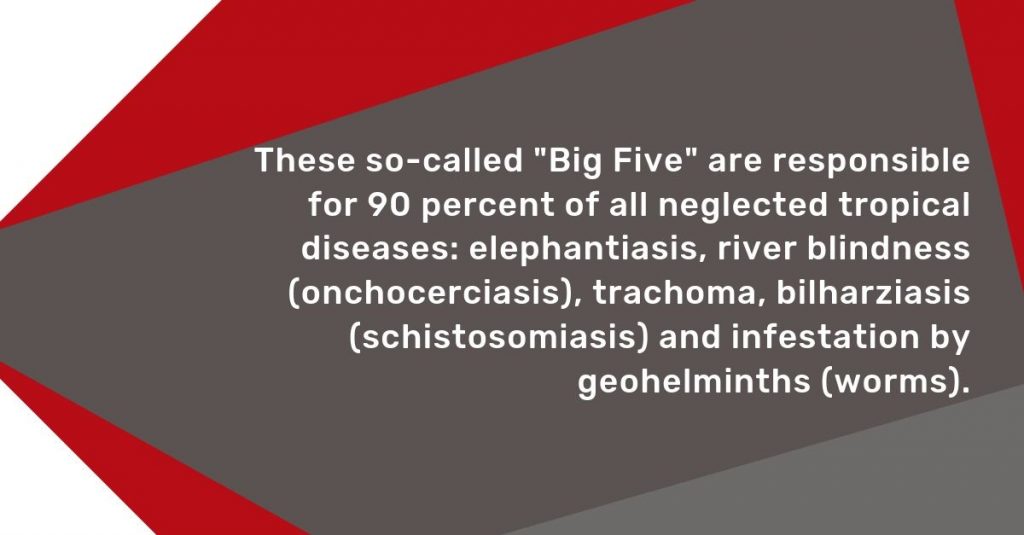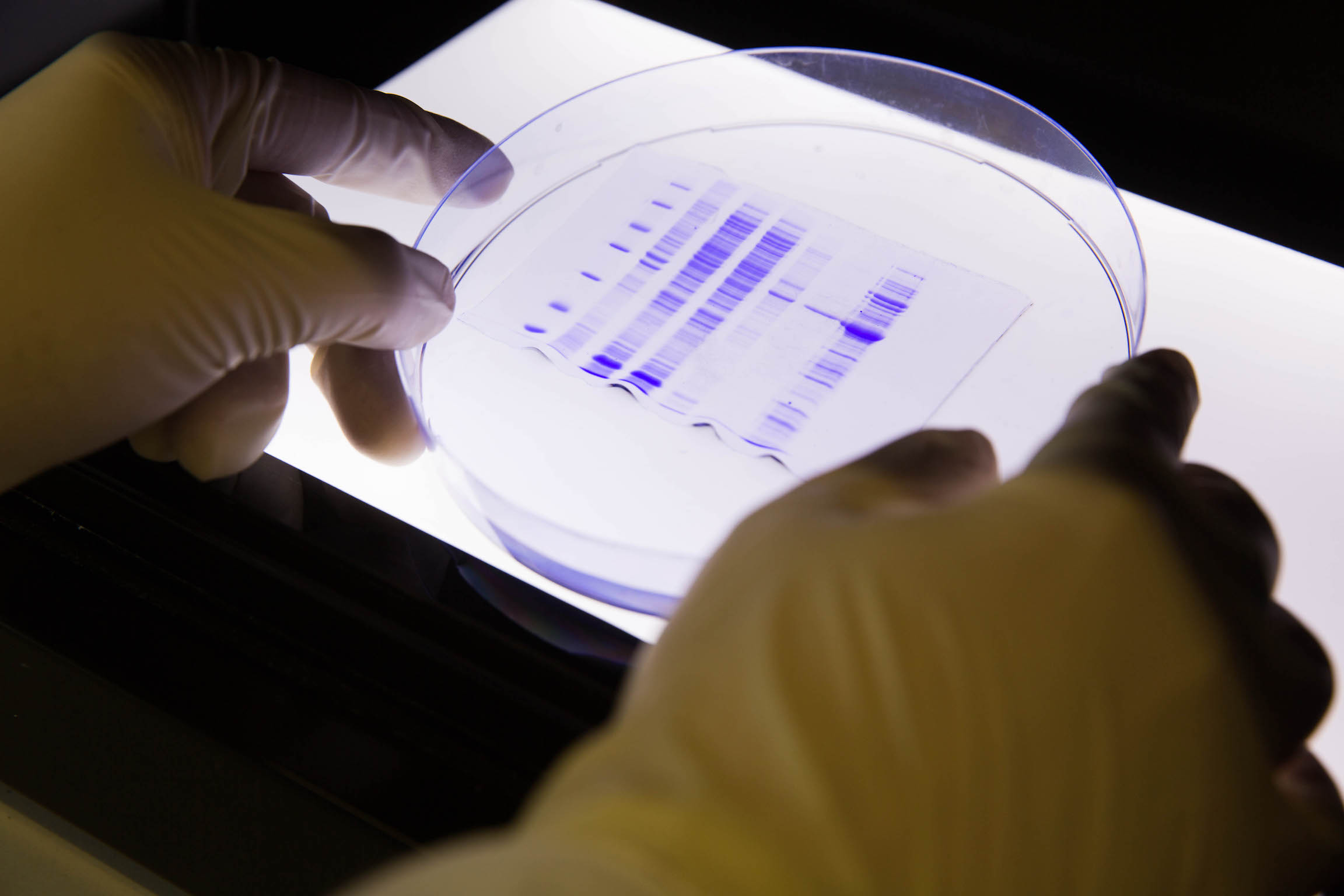The fight against neglected tropical diseases (NTDs) is gaining further relevance as the number of affected populations grows, and industrialized nations increasingly recognize the significance of these diseases. The LOEWE Center DRUID provides a strong example of cooperation among Hessen institutions to advance the fight against these diseases.

“More than one billion people in 150 countries all over the world suffer from poverty-associated and neglected tropical diseases (NTDs),” explains Prof. Dr. Katja Becker, professor for Biochemistry and Molecular Biology at the Justus Liebig University in Giessen and spokesperson of the LOEWE Center DRUID. “NTDs affect poor and marginalized populations mostly in developing countries and have received in the last decades very little attention in terms of research, drug and vaccine development, diagnostics and funding.”
Caused by a variety of microorganisms as viruses, bacteria, parasites or fungi, NTDs prevail in tropical and subtropical conditions. The diseases are further aided by poor sanitary conditions, limited access to clean water and the absence of vector protection against the spread of the diseases; at the same time, affected populations are often hindered in accessing preventive measures and therapies.

Tropical Diseases are a serious problem
As a result, most affected people are poorly cared for. As if this were not already devastating, a NTD infection may lead to severe chronic complications and disabilities that reduce the ability to work and to secure a family’s income. Children affected by NTDs or with affected family members may not attend school regularly, leading to impaired intellectual development. Finally, NTDs lead to massive social and economic losses, costing developing economies billions of dollars every year. “The fight against these infectious diseases is not only very important from a medical and humanitarian point of view,” remarks Becker. “It also helps break the cycle of poverty and avoid social injustice, violence or even migration flows.” For many NTDs, there are either not enough effective drugs, or the existing ones have major side effects. Another problem is that drug resistance threatens the efficacy of existing medications.

Interdisciplinary research
To begin to address these issues, one approach is to identify essential new drugs, vaccines and diagnostics. This is the focus of more than 30 researchers at the LOEWE Center DRUID (Novel Drug Targets against Poverty-Related and Neglected Tropical Infectious Diseases). The project joins together medical universities in Hessen as well as the Paul Ehrlich Institute and the University of Applied Science in Central Hessen. “Cooperation is essential to move forward and develop new drugs,” explains Becker. “In the LOEWE Center, we have an intense exchange of expertise among scientists involved in more than 20 interdisciplinary research projects. To develop new drugs, we need many different techniques from infection models to protein analysis, to structural biology, to drug synthesis and optimization. Our methods platform allows every researcher to see which group has a specific know-how and can share it. Through cooperation we create synergies, develop new ideas and also increase the visibility of our projects.” Becker’s group, for example, is focusing on the cellular redox metabolism to identify potential targets for drug development. While oxidative stress and oxygen radicals can damage the delicate cellular balance, all cells — as well as pathogen cells — have defense mechanism to avoid this. Therefore, developing new inhibitors which can specifically impair those defense mechanisms in pathogen cells can pave the way for new therapeutic approaches.
“The Asian tiger mosquito brings tropical diseases”
Malaria was considered defeated in many parts of Europe. But tourism and climate change have led to the migration of foreign mosquito species, and these invasive species can introduce completely different tropical pathogens. Dr. Helge Kampen, head of the laboratory at the Institute for Infectious Medicine (IMED) at the Friedrich-Löffler Institute in Greifswald, explains the situation and why global warming is also leading to native mosquitoes posing a growing threat.

This is due to globalization and global warming: Globalization favors the spread of mosquitoes. Global warming, in turn, helps warmth-loving mosquito species to settle and spread in Germany, for example. The Asian tiger mosquito is an example of this. It is still very locally limited in Germany. The mosquito does not fly far and therefore does not spread rapidly. The climate is not ideal and does not promote its spread. However, the mosquito species is adapting slowly. Italy has shown how fast a mosquito can spread. There, the Asian tiger mosquito can be found almost everywhere and in relatively high population densities.
Invasive mosquitoes do not always carry viruses or pathogens. However, when they suck blood, they can become infected and spread pathogens. The probability of local transmission, therefore, increases with the population density of mosquitoes and the infections that occur in humans. Often, infected persons do not know directly if they have been infected with dengue, chikungunya or Zika virus while travelling. If foreign mosquito species and tropical diseases are introduced in parallel, tropical diseases can spread further in northern hemisphere countries.
An infection happens particularly well when it is warm: Mosquitoes develop rapidly, blood digestion accelerates, and generation time decreases. Viruses and other pathogens develop more rapidly, and the mosquito is infectious much faster. When a mosquito becomes infected, the virus enters the intestine for the first time. From there, it has to migrate through the mosquito’s body into the salivary gland. Viruses are always transmitted via the mosquito’s saliva during the bite. The virus’ migration from the intestine to the salivary gland takes a while because the virus slowly multiplies from cell to cell. The warmer it is, the faster it goes. If the climate in Central Europe becomes even warmer, then it is highly probable that native mosquito species will also become carriers if they encounter the right virus or pathogen.
Ending NTD by 2030
The center’s attention to NTDs could not be more important NTDs have been recognized as a target for global action towards the “Sustainable Development Goals” of the United Nations.

“In order to achieve the goal of ending NTD by 2030, we need good networking,” remarks Becker. “We need cooperation among scientists in Germany, Europe and in the whole world. We need cooperation between academia and private sector, and we need cooperation with people and scientists in the affected countries in order to be able to conduct research on-site.” Providing incentives for the pharmaceutical industries in order to translate scientific discoveries into industrial applications will be also crucial to develop and bring new drugs on the market and significantly contain NTDs.
What else can be achieved by combating NTDs?
- Evolution of nutritional standards
- Prevention of nursing care due to debilitating illness
- Development of fertile and pathogen-free arable land
- Establishment of health care systems
- Reduced risk at other diseases or births

